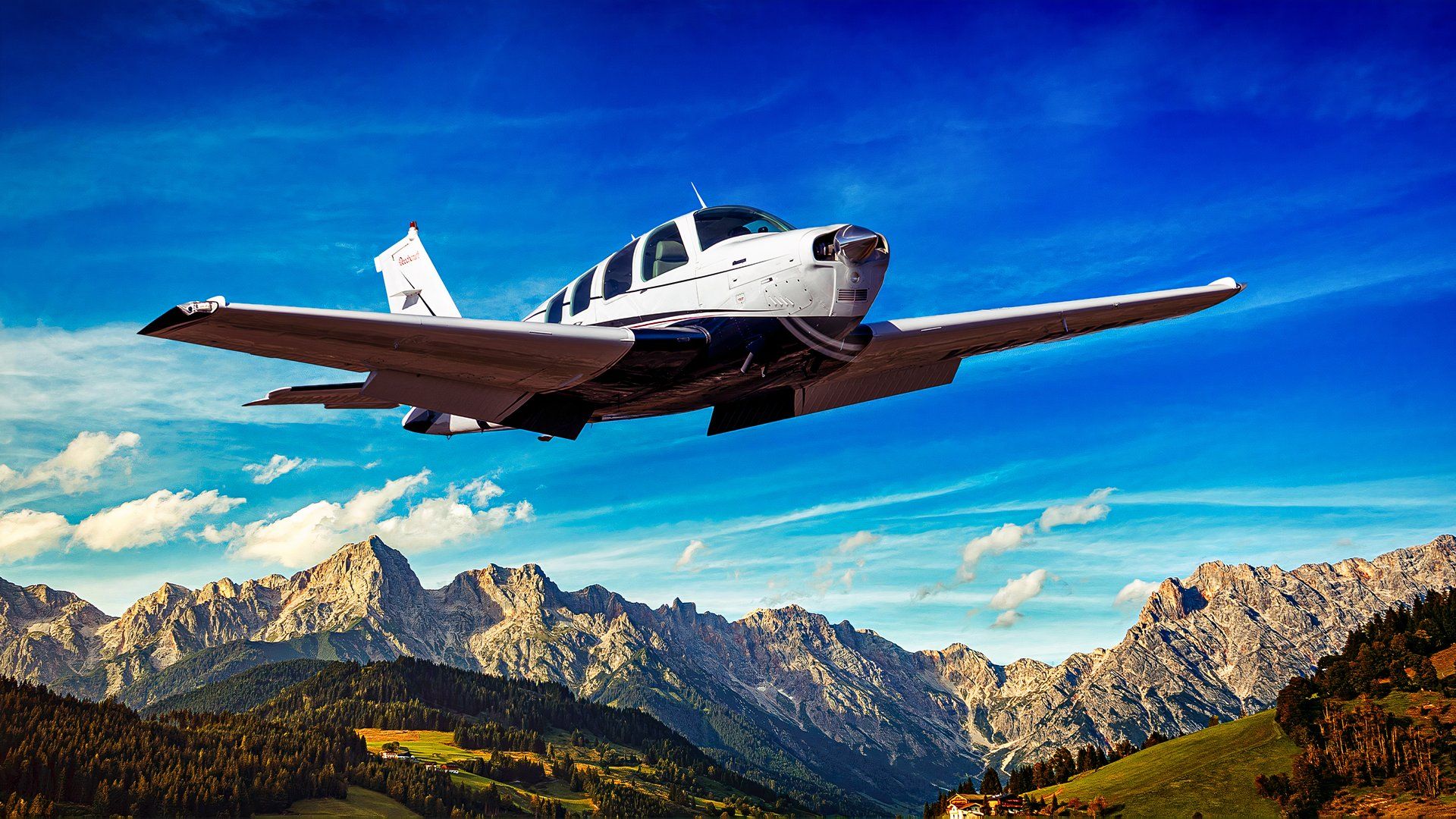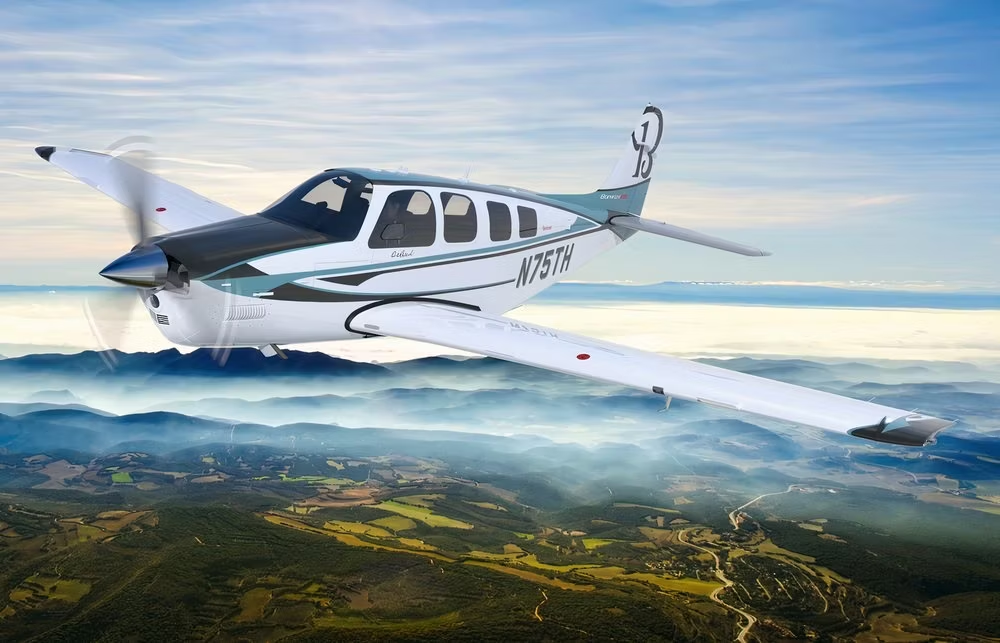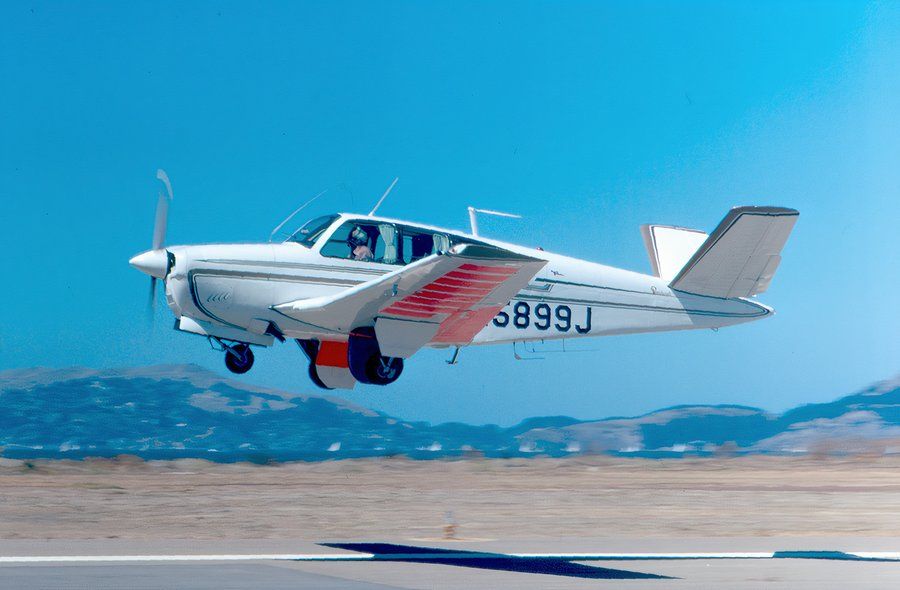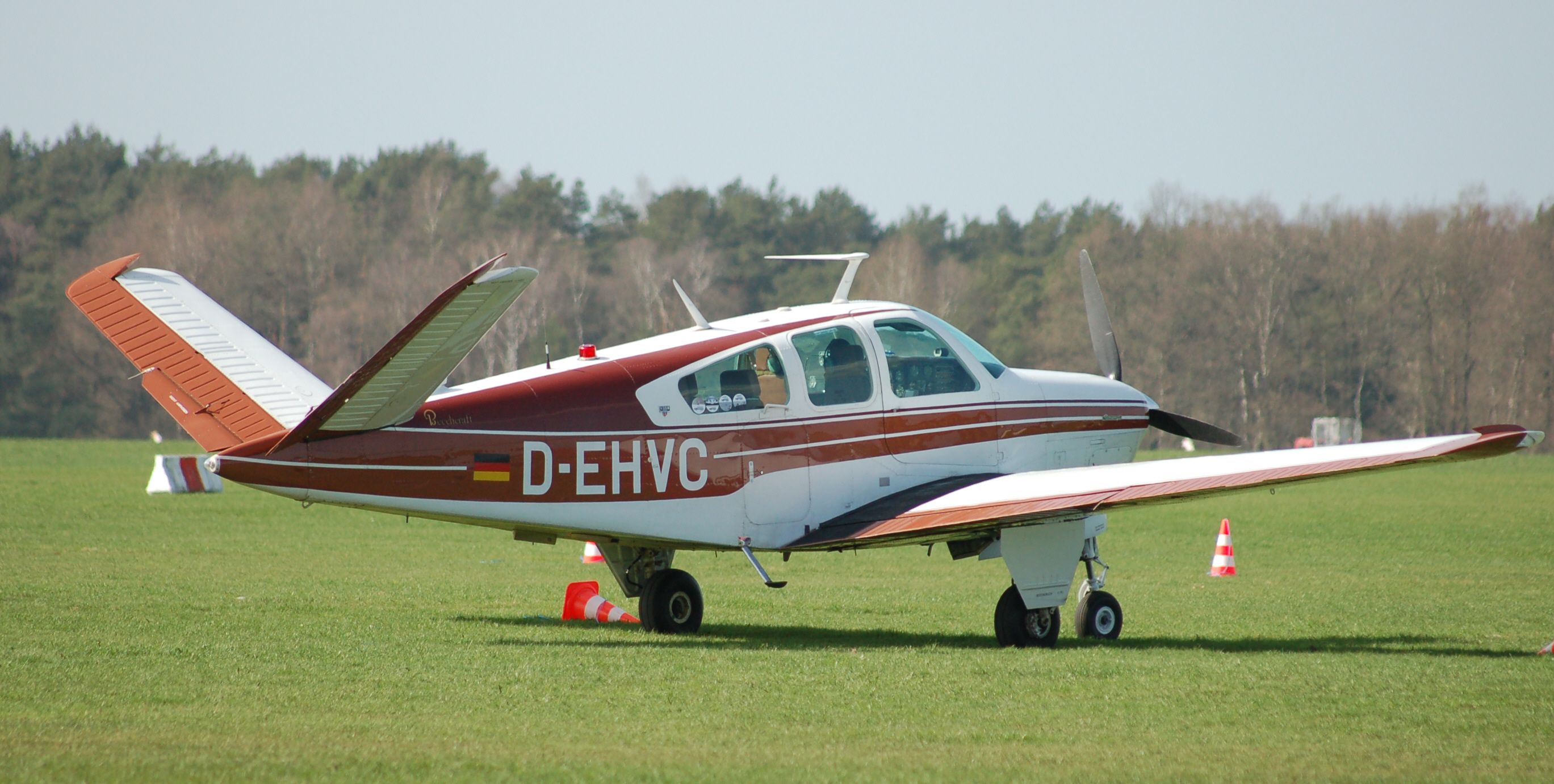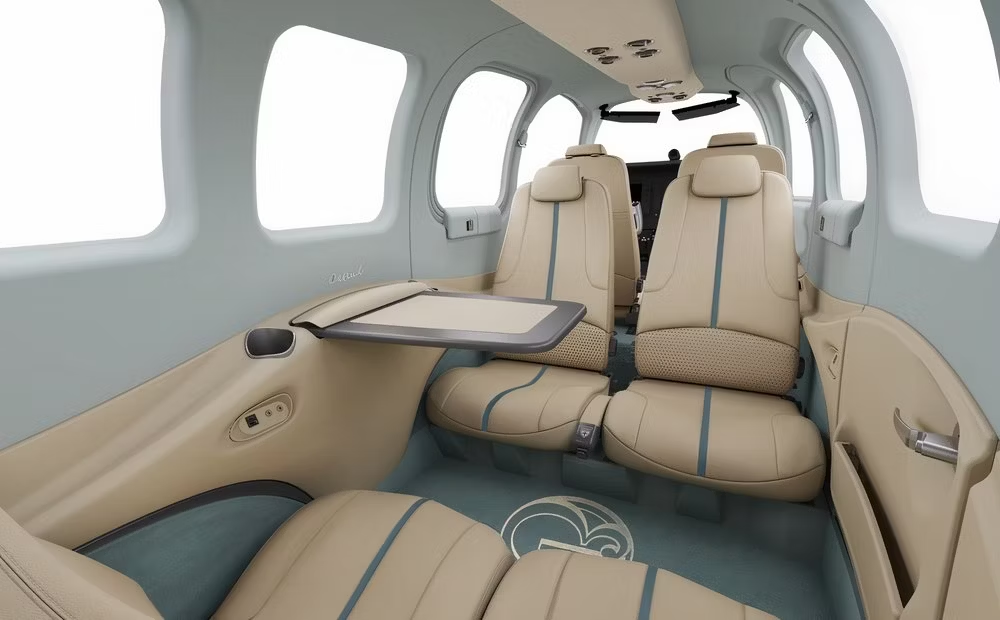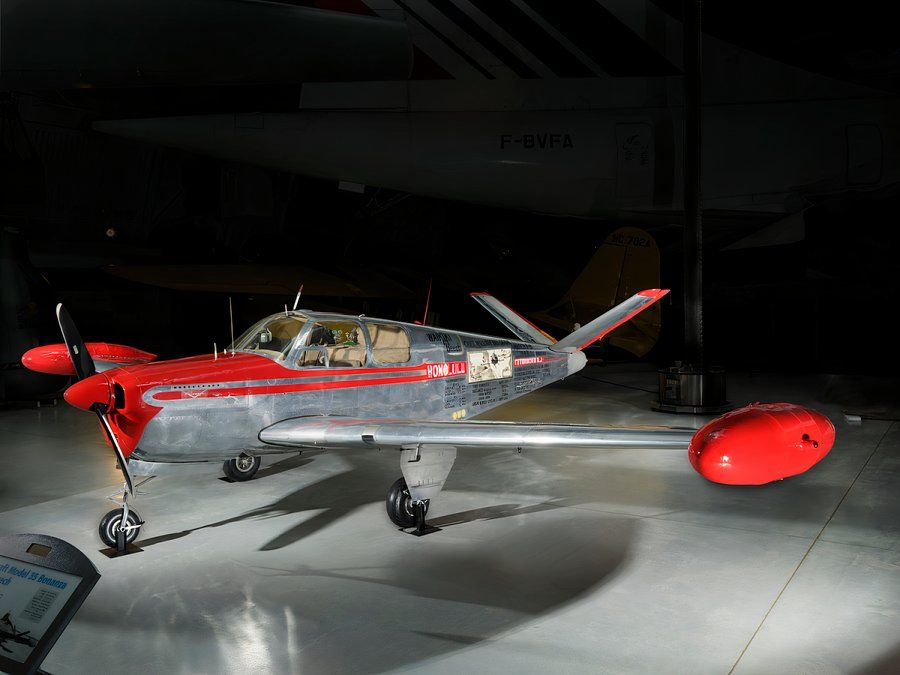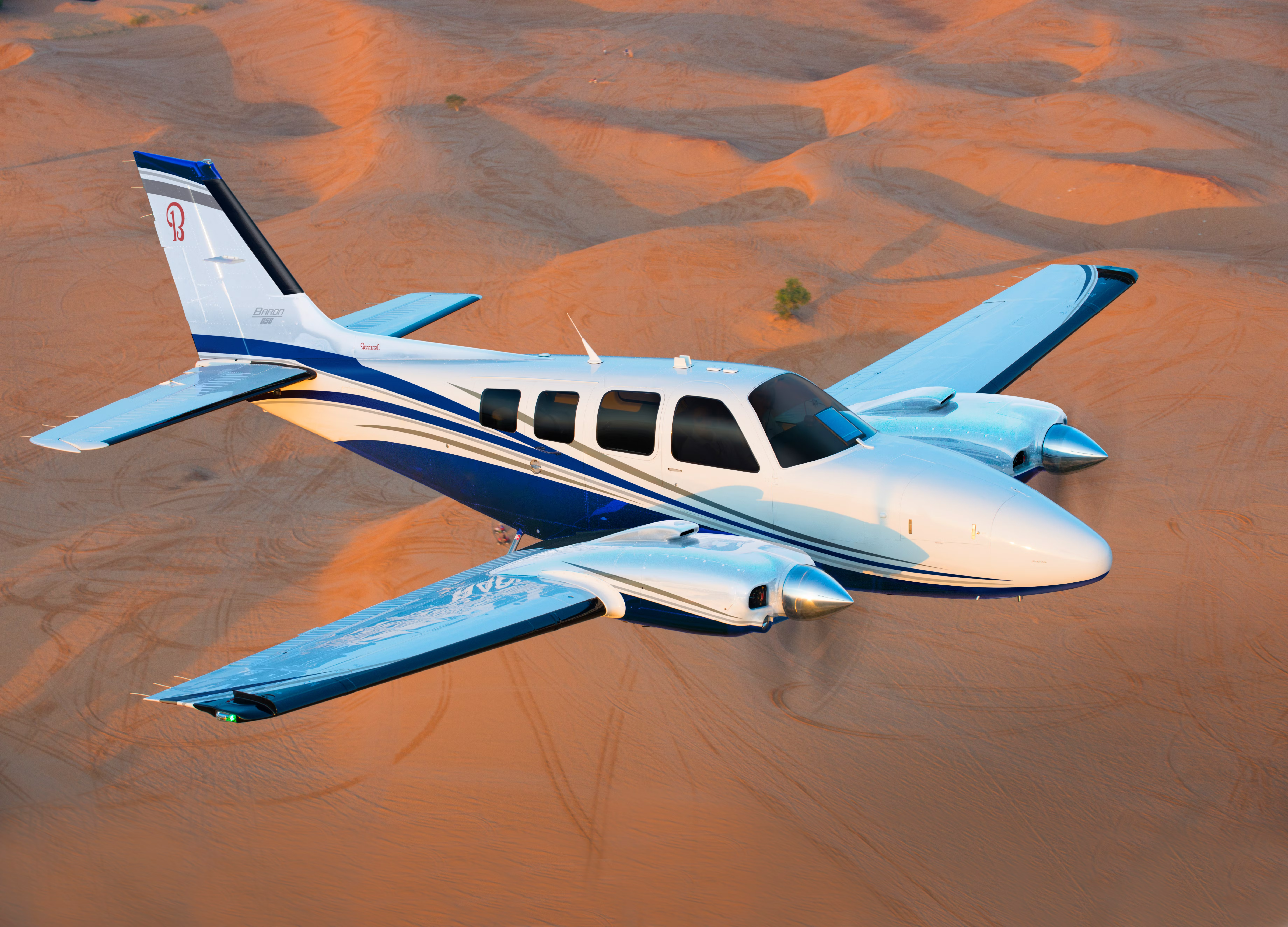Many aviation enthusiasts will think of the Beechcraft Bonanza when considering the most popular Beechcraft piston aircraft. Bonanza, first introduced in 1947, was immensely popular and holds the record as the longest-continuously produced aircraft, with over 17,000 units built.
The latest Bonanza design—the G36—is still in production. The Bonanza’s legendary status is due to its speed, durability, versatility, and consistent performance improvements over the decades.
Longevity and continuous production
The Beechcraft Bonanza’s unsurpassed production run of over 70 years demonstrates its enduring popularity with owners and pilots. Aircraft models tend to evolve or become obsolete, but the Bonanza has defied this trend. The longevity of its production proves its design brilliance and the faith that private pilots and businesses have placed in the aircraft.
Photo: Textron Beechcraft
From the V-tail models introduced in the early years to the current G36 version, the Bonanza’s core design has stood the test of time. No other general aviation piston aircraft has enjoyed such an extended production life, making the Bonanza popular and iconic.
High production numbers
With over 17,000 aircraft produced, the Bonanza has outpaced other piston-engine planes in sheer numbers. This high production volume clearly indicates its consistent demand in the aviation market. Unlike many aircraft that see their production numbers drop off after initial success, the Bonanza has maintained its appeal for decades.
Photo: Bill Larkins | Shutterstock
The Bonanza’s versatility is one of its key selling points. Initially designed as a high-end four-passenger aircraft for the personal and business market, newer models increased passenger capacity to six. The Bonanza can comfortably carry passengers over long distances, with a range of around 920 NM in the modern versions, making it a favorite among private pilots and small businesses.
The Bonanza’s original design was revolutionary. Introduced with an all-metal airframe when many other aircraft were still made of wood and fabric, it immediately set a new standard for light aircraft construction. Its retractable landing gear and low-wing configuration improved its aerodynamic efficiency and aesthetic appeal.
The distinctive V-tail became a defining feature—a symbol of innovation and modernity in post-World War II aviation. Though later models would adopt a more conventional tail configuration like the Debonair, A36, and Bonanza G36, the V-tail created the defining image of the Bonanza, further contributing to the aircraft’s popularity.
The “V-tail” Bonanza also drew criticism, as the tail caused the airplane to “corkscrew” around its longitudinal axis in cruise. Also, because the Bonanza was always on the high end of the general aviation price scale, it was often bought by affluent individuals without much flying experience. The aircraft was derisively called “the fork-tailed Doctor killer.” This was not due to any safety deficiency in the plane but to the tendency for the low-time new-owner pilot to continue flight into instrument meteorological conditions (IMC).
Performance and Versatility
The Bonanza has long been praised for its impressive performance. Early models could cruise at up to 175 miles per hour, a significant achievement for its time. Modern versions like the newest Bonanza G36 boast a cruise speed of around 174 kts (200 mph), solidifying the aircraft’s reputation for speed and efficiency.
Photo: Textron
In addition to speed, the Bonanza’s handling characteristics have been praised by pilots, making it a joy to fly. Its ability to carry up to six passengers with ample baggage makes it versatile enough for personal, business, and flight school use. The aircraft’s comfortable cabin and advanced avionics, such as the Garmin G1000 NXi in newer models, have kept it competitive in today’s market.
The “G” in Bonanza G36 represents Beechcraft’s transition of Bonanza’s cockpit displays and avionics to the Garmin G1000 glass cockpit.
Continuous improvement
One of the keys to Bonanza’s enduring popularity is Beechcraft’s commitment to continuous improvement. Over the years, the aircraft has seen numerous upgrades, from engine power increases (e.g., current G36 models feature a 300-horsepower Continental IO-550-B six-cylinder engine) to the latest avionics technology. These enhancements have kept the Bonanza relevant, appealing to traditionalists who value its legacy and new pilots seeking modern systems.
Photo: NASM
In addition to technological advancements, Beechcraft has worked tirelessly to improve the aircraft’s structural integrity and safety features, making the Bonanza not only fast and comfortable but also one of the safest aircraft in its class.
Cultural impact and legacy
The Bonanza is not just a highly functional private aircraft; it has also left a lasting cultural mark on aviation. In 1959, it was named one of the top 100 best designs of mass-produced products by a panel of designers and architects, illuminating the airplane’s impact beyond just the aviation community.
The aircraft has also been a part of numerous record-breaking flights, including long-distance and around-the-world trips, further cementing its legendary status.
Its reputation as the “Cadillac of single-engine aircraft” is well-deserved. The Bonanza’s high-quality craftsmanship, fit, and finish have set it apart from its competitors, making it a symbol of luxury and performance in general aviation.
Another popular piston design—the Beechcraft Baron
While the Bonanza reigns as the most popular Beechcraft piston aircraft, it’s worth mentioning the Beechcraft Baron series is a close contender. These sleek twin-engine aircraft, long favored by pilots, appeal to those needing the extra safety and performance of two engines. The Baron G58 can cruise comfortably at 202 knots and has a range of 1,480 nautical miles, making it a popular choice for longer trips.
Photo: Textron Aviation
Though it is more expensive to operate and maintain than the Bonanza, the Baron is appreciated for its robust performance and ability to fly in conditions that would ground most single-engine aircraft. It remains a popular option for pilots who prioritize safety and performance on more challenging missions.
In the pantheon of piston-engine aircraft, the Beechcraft Bonanza stands head and shoulders above the rest. Its innovative design, stellar performance, and remarkable longevity have secured its place in aviation history. Whether for personal use, business, or flight training.
The Bonanza’s appeal has remained strong for over 70 years, and there’s no end in sight. Textron reports that its Beechcraft Bonanza G26 order book is backlogged into 2027.

